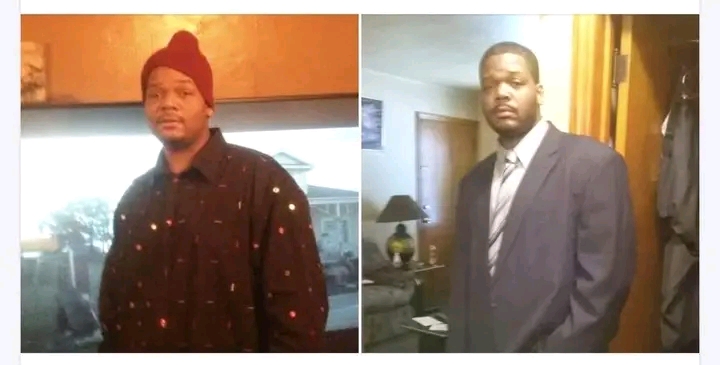Corey Williams Fatally Shot in Heartbreaking Domestic Tragedy; Teenage Son Sought by Authorities Following Milwaukee Incident
MILWAUKEE, WI — A city already burdened by the growing toll of gun violence was left stunned by a profoundly tragic and deeply unsettling incident that unfolded on the afternoon of Wednesday, July 2, 2025. Forty-seven-year-old Corey Williams lost his life inside the walls of his own home, the very place meant to offer safety and comfort. The suspected shooter, heartbreakingly, is believed to be his own teenage son — a revelation that has left neighbors, relatives, and city leaders grappling with disbelief, sorrow, and urgent questions.
The incident occurred inside a family apartment located near North 11th Street and West Atkinson Avenue, a neighborhood where working-class families have long lived side-by-side, building lives grounded in mutual support and community strength. But on that day, a moment of violence erupted that would shatter one family’s future and send emotional shockwaves through an entire city.
Law enforcement responded quickly after receiving multiple 911 calls reporting gunfire. When officers arrived on the scene, they discovered Corey Williams with critical injuries consistent with a shooting. Despite efforts from first responders and emergency medical personnel, he could not be revived and was pronounced deceased at the scene.
The Milwaukee Police Department later confirmed that the suspect in the shooting is believed to be Williams’ own teenage son, who fled the residence immediately following the incident. As of Thursday, the young suspect remains at large, prompting an active manhunt and intense public interest in the case.
A Shattered Household
The emotional weight of this tragedy is profound, not only because it involves the loss of a father but because of the deeply personal nature of the act. Sources close to the investigation revealed that there had been recent signs of tension within the household. However, no one anticipated that those internal struggles would escalate into deadly violence.
Neighbors described Corey Williams as a hardworking man who was deeply involved in the lives of his children. He was often seen walking with them, offering advice on the porch, and speaking with pride about their accomplishments. For many, the thought that such a tragedy could occur between a father and son is almost too painful to comprehend.
“This is the kind of story that stops your heart,” one neighbor said. “I can’t imagine what went so wrong. That man loved his kids.”
While the exact motive behind the incident has not yet been made public, police sources indicate that an argument may have preceded the shooting. Whether this dispute was part of a longer pattern of tension or a sudden escalation remains a central question in the investigation.
Search for the Suspect
Milwaukee police are actively searching for the teen suspect, who has yet to be publicly named due to his age. Law enforcement agencies have asked for the public’s help in locating him, but they have also emphasized the sensitivity and volatility of the situation.
“This is a deeply tragic and complex case involving a minor and the loss of a parent,” said a department spokesperson. “We are asking for the community’s assistance in locating this young individual, not to punish, but to bring this situation to a safe and just resolution.”
Police have warned that the teen may be armed and should not be approached. Instead, anyone with information is urged to call the local tip line or Crime Stoppers.
The urgency of locating the suspect is not only about legal consequences—it’s also about ensuring his safety and mental health. Experts say that young individuals who commit acts of extreme violence often experience shock, dissociation, or suicidal thoughts in the immediate aftermath.
Community Response: Pain, Confusion, and Reflection
As news of the incident spread across Milwaukee, community members began gathering near the apartment complex to express their sorrow and confusion. Friends and relatives of the family stood in silence, many clutching candles or prayer beads. Some brought flowers and left messages on hand-painted signs that now rest at the base of the apartment steps.
Local clergy and community leaders arrived shortly after to offer grief support and begin organizing community dialogues about how to address family conflict before it turns fatal.
“This is a wound that runs deep,” said a local pastor who had known the family casually. “We have to grieve this loss, yes. But we also have to ask what more we could have done to prevent it. Because this is not just a failure within one home—it’s a failure we all share responsibility for.”
Youth counselors from city outreach programs have also mobilized to provide support in the neighborhood, particularly to classmates, friends, and siblings who may have been close to the teenage suspect or otherwise impacted by the trauma.
The tragedy has also prompted emotional responses on social media, where hundreds of residents are sharing condolences, memories, and expressions of disbelief. Posts are filled with photos of Corey Williams—at barbecues, at school events, and alongside his children—juxtaposed with words like “heartbreak,” “senseless,” and “unimaginable.”
A Deeper Issue: Mental Health and Youth Violence
This incident has reignited urgent conversations about youth mental health, gun access, and the growing tension inside American households where economic, emotional, and psychological pressures can build to dangerous levels.
Advocates and educators point to a troubling increase in violent behavior among teens—a trend that has been documented across the country. They argue that many young people are struggling with untreated trauma, unaddressed mental health challenges, and a lack of constructive outlets for expressing anger, fear, or confusion.
In Milwaukee, these issues have become particularly urgent as the city continues to witness increased incidents of youth-involved shootings and violence.
“This wasn’t just an act of violence—it was a scream for help that came far too late,” said a youth violence prevention coordinator. “We have to build stronger bridges between our schools, families, and mental health services. Otherwise, we’ll keep seeing tragedies like this.”
Remembering Corey Williams
Even as the investigation and manhunt continue, many in Milwaukee are focused on honoring the life that was lost. Corey Williams is being remembered as a devoted father, a kind-hearted man, and someone who always tried to do right by his family, despite challenges.
A community vigil is being planned for the weekend, where friends and loved ones will gather to mourn, share stories, and pray for peace. Organizers have also begun raising funds to support funeral expenses and provide assistance to other family members affected by the tragedy.
“This man loved his kids,” one friend wrote online. “He worked hard. He stayed out of trouble. He wanted to give them a better life. He didn’t deserve this.”
In the days to come, community members say they hope to shift the conversation from one of only mourning to one of accountability, healing, and systemic change. The life of Corey Williams will not be remembered just for how it ended, but for the example he tried to set—a legacy now left in the hands of a community searching for meaning.
The Path Forward
As authorities continue their search for the teenage suspect, the city is also confronting the broader implications of this tragedy. How can families be better supported? How can conflict at home be addressed before it turns fatal? How do we provide young people with tools to navigate emotions without resorting to violence?
While there are no easy answers, there is one clear truth that has emerged from this devastating situation: no one emerges from such an event untouched. The loss of Corey Williams is not isolated—it reverberates through the halls of schools, the corners of neighborhoods, and the hearts of every parent and child who wonders how something so tragic could happen so close to home.
Closing Thoughts
In the wake of Corey Williams’ death, Milwaukee finds itself in mourning—grieving not only the loss of a father but the painful unraveling of a family from within. The tragic nature of the incident leaves behind questions that may take months, even years, to answer.
As the investigation unfolds and the community works to heal, one thing is certain: this story is not just about one day of violence—it’s about the importance of family support, mental health care, youth engagement, and ensuring that no other child feels lost enough to make a choice that changes lives forever.




